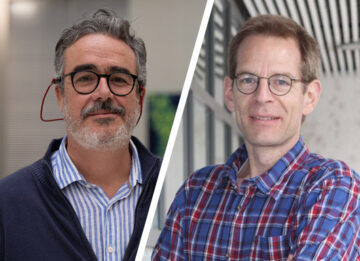François Ichas laureate of the ANR PRCI call 2024
Congratulations to the 2025 François Ichas (IMN), winner of the ANR call for projects for collaborative research – international (PRCI) as a coordinator of a Franco-Swiss project.
Project
étioMSA
Understanding Multiple System Atrophy pathogenesis at the molecular and cellular level
ANR/SNF PRCI 2024 « Franco-Swiss »
Involved labs:
- François Ichas, Coordinator France, (CNRS Bordeaux Neurocampus, France, website)
- Henning Stahlberg, Coordinator Switzerland, (EPFL, Lausanne, Switzerland, website)
Scientific Relevance:
Multiple System Atrophy (MSA) is one of the most devastating neurodegenerative diseases. It is also one of the fastest, leaving patients with only a few years of remaining life expectancy after diagnosis. We have identified an alpha-synuclein fibril strain that, when seeded into mouse brains, reproduces the same disease pattern as observed in human MSA patients. This parallelism includes molecular ultrastructures, cellular distribution and propagation, prion-like spreading behavior, and overall disease symptoms.
We will leverage this parallelism to study the mechanisms underlying MSA in detail using this model. Our findings will likely provide unprecedented molecular insight into the mechanisms responsible for fibril pathology, fibril spreading, and damage to cellular functions. Such discoveries may also be applicable to other, slower-progressing synucleinopathies, such as Parkinson’s Disease and Dementia with Lewy Bodies.
Impact:
Neurodegeneration encompasses a group of human brain diseases, including Alzheimer’s and Parkinson’s Disease, where—despite massive investments and decades of effort by academia and industry—we remain largely powerless against these devastating and often deeply saddening conditions.
If our proposed research succeeds in providing a molecular understanding of the disease mechanism in Multiple System Atrophy (MSA), this knowledge is likely to enhance our understanding of other, similar diseases, such as Parkinson’s Disease, Dementia with Lewy Bodies, and even Alzheimer’s Disease. For the first time, this would offer molecular insight into the mechanisms underlying fibril seeding, spreading, and selective cellular damage. Such knowledge could significantly advance our fight to prevent this large class of neurodegenerative diseases.

